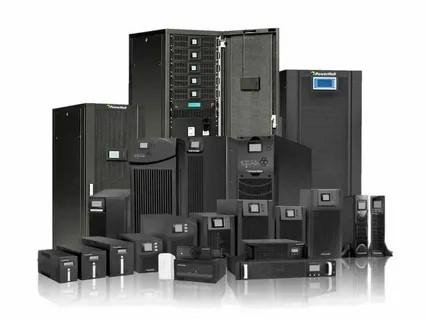The global market for integrated uninterruptible power supply (UPS) systems is entering a new growth phase as industries worldwide intensify their focus on uninterrupted operations and digital resilience. According to recent forecasts, the integrated UPS market will rise from an estimated USD 13.1 billion in 2025 to USD 21.3 billion by 2035, recording a compound annual growth rate (CAGR) of 5.0%. This growth reflects both the critical role of power continuity in modern infrastructure and the innovative strategies of established leaders and emerging manufacturers alike.
Get Ahead with Our Report: Request Your Sample Now!
https://www.futuremarketinsights.com/reports/sample/rep-gb-1893
Market Overview
The demand for integrated UPS systems is being fueled by a shifting global landscape where digital transformation, cloud computing, and industrial automation are reshaping expectations around reliability. Companies in healthcare, telecom, finance, and energy are increasingly reliant on seamless power solutions to safeguard data, protect equipment, and ensure continuous operations. Traditional UPS systems are no longer sufficient in many cases, as industries seek scalable, energy-efficient, and modular systems that integrate smoothly with renewable sources and real-time monitoring platforms.
Both global giants such as Schneider Electric, ABB, and Huawei, and new regional players are recognizing the urgency of these requirements and responding with innovations that balance high performance with cost efficiency. For these companies, integrated UPS technology represents not only a product but also a pathway to building trust with clients who cannot afford downtime.
Growth in the 10 kVA to 100 kVA Segment
Within the power range categories, the 10 kVA to 100 kVA segment is emerging as the dominant leader, projected to capture 48.6% of total revenue by 2025. This range appeals to mid-sized enterprises, distributed edge computing centers, and commercial facilities that require compact yet powerful systems.
Manufacturers are seeing significant opportunities in this segment because these UPS solutions offer the flexibility modern businesses demand. They are easy to install, support integration with digital monitoring tools, and provide a balance of scalability and affordability. New entrants are finding a competitive opening here by developing products that serve the growing number of small and medium-sized businesses transitioning to hybrid digital infrastructures. Meanwhile, established leaders are refining their offerings to maintain their hold in this lucrative category.
IT and Telecom Take the Lead in Applications
The IT and telecom sector is projected to remain the top application segment, accounting for 41.3% of total market revenue by 2025. The massive growth in global data consumption, driven by cloud platforms, 5G rollouts, and rural connectivity programs, makes power continuity non-negotiable for this industry. Data centers, switching hubs, and telecom towers are highly sensitive to even brief interruptions, which makes integrated UPS solutions mission-critical.
Leading players such as Emerson Electric and GE are doubling down on this segment, enhancing their systems with features that cater specifically to data-driven enterprises. Simultaneously, innovative startups are entering the market with agile designs that appeal to smaller telecom operators seeking reliable yet cost-effective options. This mix of competition and collaboration is ensuring the IT and telecom segment continues to benefit from rapid technological advancement.
Flexible Adaptation and Industrial Growth
The versatility of integrated UPS systems has been one of the strongest drivers of their widespread adoption. Industries increasingly rely on these systems to manage power fluctuations and outages that can disrupt sensitive automation processes. From factories with sophisticated machinery to large-scale retail outlets and education centers, integrated UPS solutions are becoming a cornerstone of continuity.
New manufacturers are seizing this opportunity by producing UPS systems designed for small-scale businesses and startups that historically relied on conventional solutions. These companies are expanding their footprints in emerging economies, where industrial and commercial activity is rapidly rising. Established players, on the other hand, are focusing on scaling up their production capabilities and regional presence to meet global demand.
Competitive Landscape and Strategic Expansion
The integrated UPS market is highly competitive, with international giants like Schneider Electric, Huawei, ABB, and Emerson Electric continuing to innovate and expand through mergers, acquisitions, and partnerships. These companies are investing heavily in research to enhance efficiency, reduce installation costs, and integrate renewable energy compatibility into their UPS systems.
At the same time, new players-particularly regional manufacturers in Asia-Pacific and Eastern Europe-are carving out space by offering more affordable yet robust alternatives. They are leveraging local insights to develop products suited to unique market needs, such as rural connectivity projects or industrial clusters in developing regions. This combination of global strength and regional agility is creating a dynamic marketplace where innovation thrives.
Regional Outlook
Asia-Pacific is expected to dominate the integrated UPS market through 2035, supported by rising energy demand, industrialization, and the rapid growth of data centers in countries like China and India. The region’s widening energy demand-supply gap underscores the need for reliable UPS systems, driving adoption across multiple industries.
North America and Europe are also significant markets, particularly given the emphasis on data security, continuity regulations, and digital transformation initiatives. Here, established players are focused on developing cutting-edge, sustainable solutions that meet stricter environmental and efficiency standards. Latin America, the Middle East, and Africa are still at earlier stages of adoption but represent promising markets where both established and new players are actively seeking to expand.
Exhaustive Market Report: A Complete Study
https://www.futuremarketinsights.com/reports/integrated-ups-market
Market Drivers and Challenges
The growth of the integrated UPS market is driven by the rising demand for high-end industrial UPS systems, increasing IT spending, and the global surge in data center investments. The systems’ ability to deliver continuous clean electricity, filter surges, and protect equipment from voltage transients makes them indispensable across industries.
However, challenges remain. High initial installation costs and ongoing energy expenses can deter adoption, particularly in smaller businesses. Moreover, conventional UPS solutions continue to compete in markets where awareness of integrated systems is limited. Overcoming these hurdles will require manufacturers-both established and new-to invest in awareness campaigns, cost reduction strategies, and value-added services.
A Future Built on Reliability and Innovation
The integrated UPS market’s trajectory toward USD 21.3 billion by 2035 reflects not only its indispensable role in modern infrastructure but also the collective efforts of manufacturers determined to shape the future of power reliability. Established leaders are setting benchmarks in performance and sustainability, while new players are introducing fresh approaches and widening access to critical technologies. Together, they are building a marketplace that is resilient, innovative, and ready to meet the challenges of a connected, digital-first world.
Future Market Insights Inc.
Christiana Corporate, 200 Continental Drive,
Suite 401, Newark, Delaware – 19713, USA
T: +1-845-579-5705
For Sales Enquiries: sales@futuremarketinsights.com
Website: https://www.futuremarketinsights.com
Future Market Insights, Inc. (ESOMAR certified, recipient of the Stevie Award, and a member of the Greater New York Chamber of Commerce) offers profound insights into the driving factors that are boosting demand in the market. FMI stands as the leading global provider of market intelligence, advisory services, consulting, and events for the Packaging, Food and Beverage, Consumer Technology, Healthcare, Industrial, and Chemicals markets. With a vast team of 400 analysts worldwide, FMI provides global, regional, and local expertise on diverse domains and industry trends across more than 110 countries.
This release was published on openPR.


















